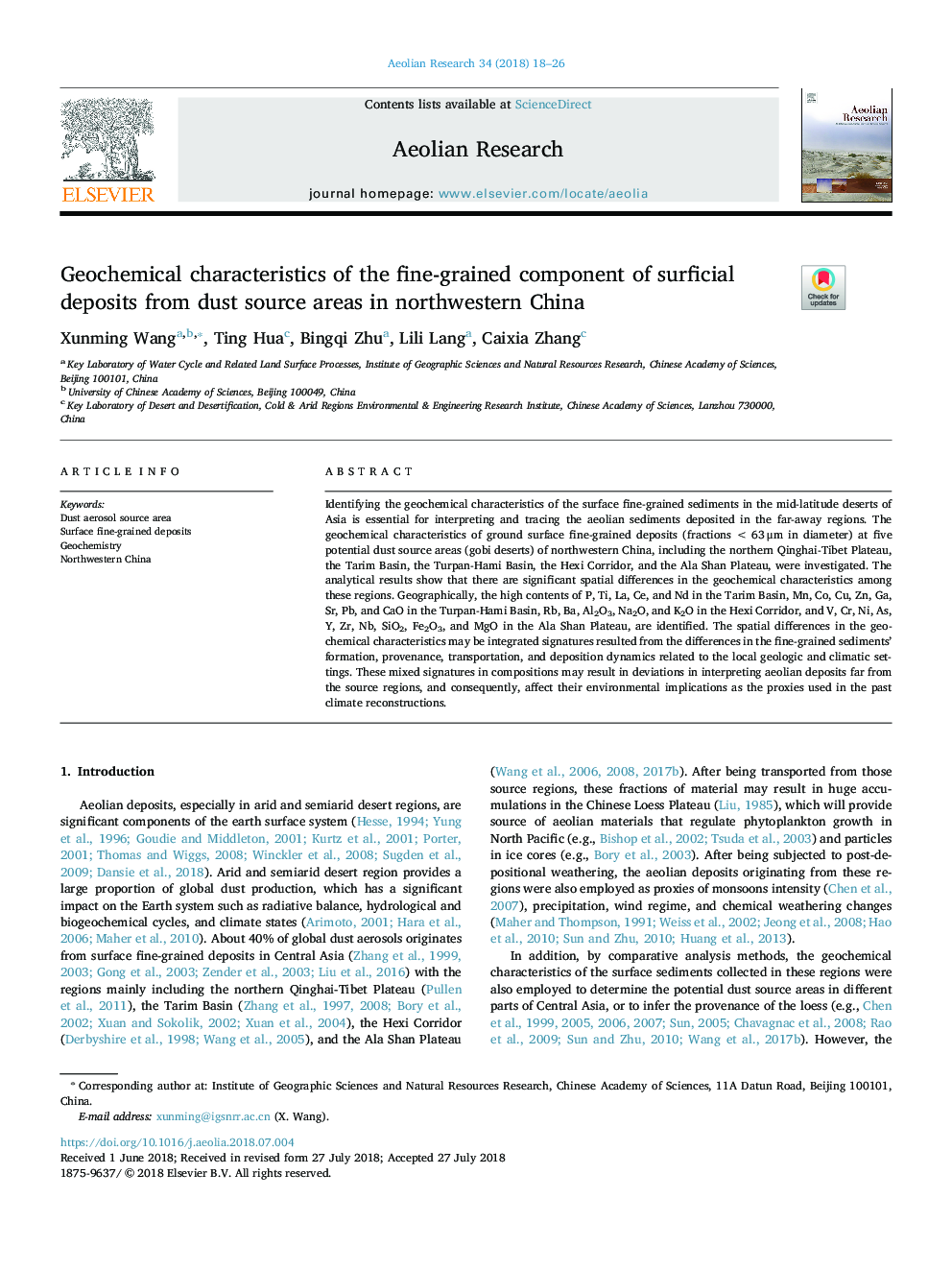| Article ID | Journal | Published Year | Pages | File Type |
|---|---|---|---|---|
| 8906204 | Aeolian Research | 2018 | 9 Pages |
Abstract
Identifying the geochemical characteristics of the surface fine-grained sediments in the mid-latitude deserts of Asia is essential for interpreting and tracing the aeolian sediments deposited in the far-away regions. The geochemical characteristics of ground surface fine-grained deposits (fractionsâ¯<â¯63â¯Î¼m in diameter) at five potential dust source areas (gobi deserts) of northwestern China, including the northern Qinghai-Tibet Plateau, the Tarim Basin, the Turpan-Hami Basin, the Hexi Corridor, and the Ala Shan Plateau, were investigated. The analytical results show that there are significant spatial differences in the geochemical characteristics among these regions. Geographically, the high contents of P, Ti, La, Ce, and Nd in the Tarim Basin, Mn, Co, Cu, Zn, Ga, Sr, Pb, and CaO in the Turpan-Hami Basin, Rb, Ba, Al2O3, Na2O, and K2O in the Hexi Corridor, and V, Cr, Ni, As, Y, Zr, Nb, SiO2, Fe2O3, and MgO in the Ala Shan Plateau, are identified. The spatial differences in the geochemical characteristics may be integrated signatures resulted from the differences in the fine-grained sediments' formation, provenance, transportation, and deposition dynamics related to the local geologic and climatic settings. These mixed signatures in compositions may result in deviations in interpreting aeolian deposits far from the source regions, and consequently, affect their environmental implications as the proxies used in the past climate reconstructions.
Keywords
Related Topics
Physical Sciences and Engineering
Earth and Planetary Sciences
Atmospheric Science
Authors
Xunming Wang, Ting Hua, Bingqi Zhu, Lili Lang, Caixia Zhang,
